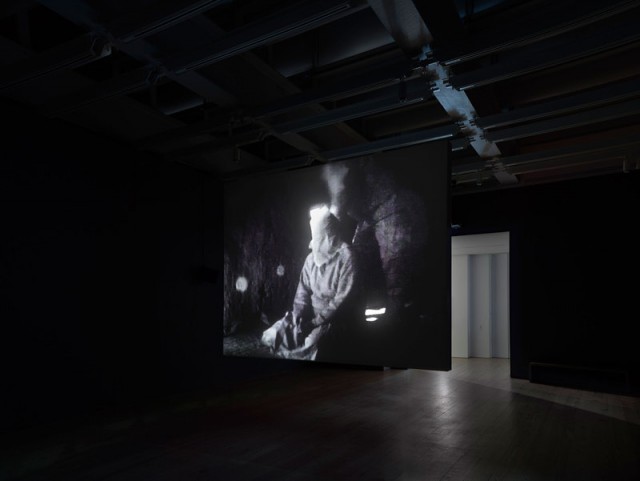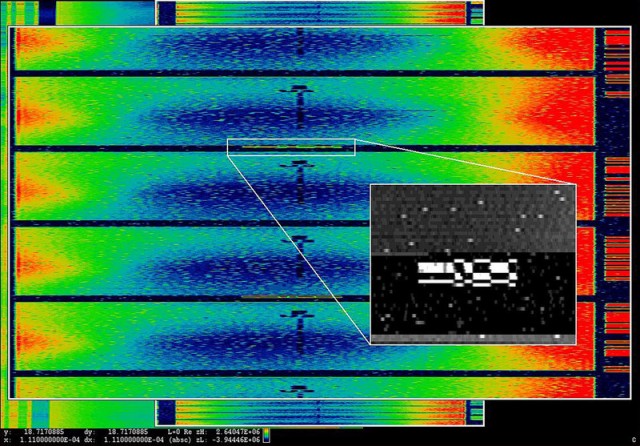
Laura Poitras examines the War on Terror from various intriguing angles in immersive Whitney exhibition (photo by Ronald Amstutz)
Whitney Museum of American Art
99 Gansevoort St.
Through May 1, $18-$22
212-570-3600
whitney.org
Award-winning documentarian, journalist, and former chef Laura Poitras has opened a lot of eyes around the world with such films as Citizenfour, The Oath, and My Country, My Country and her investigative reporting for such outlets as the Guardian, the Washington Post, and the website she started with Glenn Greenwald and Jeremy Cahill, the Intercept. The New School graduate is now sharing highly sensitive information about surveillance, drones, Guantánamo Bay Prison, the NSA, and more in a fascinating new way in “Astro Noise,” a five-room immersive installation on view at the Whitney. Poitras, whose Oscar-winning Citizenfour featured whistleblower Edward Snowden, invites viewers into a frightening world that is all too real. In the catalog, Astro Noise: A Survival Guide for Living under Total Surveillance, curator Jay Sanders notes that the title “echoes with associations. Discovered accidentally by astronomers in 1964 and initially thought to be a technical error, astro noise refers to the faint background disturbance of thermal radiation left over after the big bang. . . . More pointedly, Astro Noise is the name Edward Snowden gave to an encrypted file containing evidence of NSA mass surveillance that he shared with Poitras in 2012.” The exhibition begins with selections from her “Anarchist” series, consisting of full-color, large-scale prints of images Poitras created based on documents Snowden gave her of descrambled signals from the UK’s Government Communications Headquarters, including “Israeli Drone Feed (Intercepted February 24, 2009)” and “Power Spectrum Display of Doppler Tracks from a Satellite (Intercepted May 27, 2009).” In the middle of the second room is a thick two-sided screen on which two different films are projected on opposite sides; for O’Say Can You See, Poitras filmed people coming to Ground Zero and looking at the destruction wrought by the 9/11 terrorist attacks, while on the other side is U.S. military footage of 9/11-related interrogations of Said Boujaaida and Salim Hamdan, who both ended up at Guantánamo. In the third room, “Bed Down Location” visitors can lie down on a carpeted raised platform and gaze up at a screen on the ceiling that shows night skies in Yemen, Somalia, and Pakistan, where drone attacks have taken place, as well as the sky at Creech Air Force Base in Nevada, where drones are tested and flown.

Laura Poitras, “ANARCHIST: Israeli Drone Feed (Intercepted February 24, 2009), pigmented inkjet print mounted on aluminum, 2016 (courtesy of the artist)
For “Disposition Matrix,” Poitras situates narrow, rectangular viewing peepholes at different heights in six walls; inside are official documents, video interviews, cell-phone footage, screenshots from intercepted drone feeds, and diagrams that deal with various aspects of the War on Terror, including Abu Ghraib prison, definitions of such phrases as “clandestine collection” and “covert action,” and home video of a town in Yemen on two successive days in August 2012, one depicting a wedding, the second the aftermath of a U.S. drone strike. Because of the way the peepholes are arranged, it is difficult to get the full picture of what is inside each slot, evoking how hard it is to get the full story from the government. In the fifth room, Poitras, who participated in the 2012 Whitney Biennial, makes herself the subject, something she specifically avoids in her documentaries, detailing how the U.S. government put her on a secret watchlist, continues to track her, keeps detaining and interrogating her at airports, and considers legal action to arrest her under the Espionage Act. (Meanwhile, she has sued the government.) Poitras adds a little surprise at the end, revealing how any one of us could be next. In a catalog interview with Sanders, Poitras states, “I very much like the idea of creating a space that challenges the viewer as to whether to venture in or not. . . . We live life not knowing what will happen next. What do people do when they’re confronted with choices and risks?” Poitras’s debut art installation does just that, confronting visitors with ideas and information that, unfortunately, might no longer be shocking but still come with alarming choices and risks.